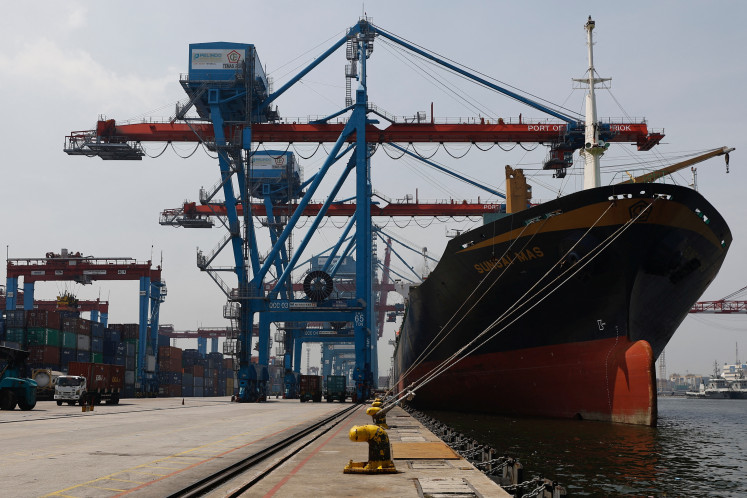Challenges for better forest governance
Carbon-dense peatland
Change text size
Gift Premium Articles
to Anyone

C
arbon-dense peatland. Carbon emission reduction. Low-carbon economy. These are key terms in Indonesia’s initiative to reduce emissions of greenhouse gases (GHG) from deforestation and degradation of forests (REDD).
President Susilo Bambang Yudhoyono has set a 7/26 target: 7 percent annual economic growth and 26 percent reduction of GHG, mainly carbon dioxide, as opposed to a “business-as-usual” scenario, by 2020.
The effort to reach this goal is being helped by a May 20, 2011, presidential instruction to stop the issuance of new permits to convert primary forests and peatlands for two years. In this international year of forests, this is just one tool to arrest and reduce emissions of carbon dioxide in Indonesia’s REDD+ program.
On one hand, the moratorium had to take into account the demands of NGOs to put a full stop to all forest exploitation, and on the other it had to be agreeable to commercial interests pushing for a business-as-usual scenario. These interests are businesses in oil palm plantations, mining and agriculture that convert forests and peatlands for use in these sectors.
Putting aside the positions for and against the presidential instruction, the question is what comes next? What action can Indonesia take after the two-year period of the moratorium? How would such action have an impact on local administrations that by law now enjoy autonomy? What hard and fast rules should apply down to local levels for accountable forest governance?
Future policy decisions should consider a January 2011 satellite-based study by researchers from the London School of Economics and the Massachusetts Institute of Technology. “The Political Economy of Deforestation in the Forests” says the political economy at the local level substantially affects the rate of tropical deforestation in Indonesia.
The 49-page paper reports three main results from a MODIS satellite that tracked annual changes in forest cover over an eight-year period.
First, it showed that increasing numbers of political jurisdictions have led to increased deforestation. Second, it showed the existence of “political logging cycles” where illegal logging increases dramatically in the period leading up to local elections.
Third, for local government officials, logging and other sources of rent are short-run substitutes. This affect disappears over time as political equilibrium shifts.
The study shows how the economics of corruption can drive natural resource extraction. It concluded that unless Indonesia’s REDD+ program takes into account those local actors who benefit from legal and illegal logging, it is unlikely the initiative will be effective.
Agus Purnomo, President Yudhoyono’s special adviser on climate change, responded to the LSE/MIT paper in an article published in Koran Tempo daily on March 8, 2011. The Elections Law should “enhance local elections rules so that qualified and honest candidates can compete with rich or reckless ones who pawn their regions’ natural resources to their financial backers,” he wrote.
Reform in local elections is part of efforts to reduce Indonesia’s carbon emissions from forestry and peatlands. The success in boosting the quality of Indonesia’s democracy can also positively affect the quality of natural resources management, Agus says.
According to the Forestry Ministry, Indonesia loses between 1.1 and 2 million hectares of forests and peatlands to deforestation each year. This is equal in size to Bali and Lombok combined. Deforestation is the Indonesia’s main source of carbon emissions.
Deforestation could increase with more decentralization. The enactment of the 1999 Local Governments Law spurred the carving out of new provinces, districts and cities from previously larger provinces, districts and cities (known locally by the term pemekaran).
The number of provinces has increased from 27 to 33. Districts and cities have surged from 291 to 498, each with their own autonomy.
In Indonesia’s REDD+ program, in line with the US$1 billion partnership signed with Norway in 2010, the government is formulating a REDD+ national strategy, setting up an executive agency and forming an independent monitoring unit.
The President should also consider drafting a new presidential instruction and an amendment to the law.
First, it should include a moratorium on regional division or pemekaran. Second it should reform local electoral policy to improve the quality of democracy and reduce deforestation.
The writer teaches journalism at the Dr Soetomo Press Institute (LPDS) in Jakarta.









